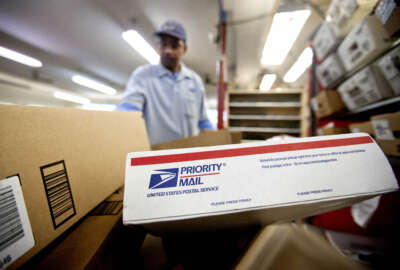
What Americans told USPS about drone delivery
The U.S. Postal Service wants to jump on the drone delivery bandwagon, but the American people are not entirely sure about the idea just yet.
The U.S. Postal Service wants to jump on the drone delivery bandwagon, but the American people are not entirely sure about the idea just yet. That’s what the USPS Office of the Inspector General found when it polled almost 1,500 people about the topic.
Because the drones would be using public airspace, USPS decided that American citizens should have the opportunity to weigh in on the subject. Toward that end, it polled around 1,200 people between ages 18 and 75, as well as an additional 250 residents from rural areas.
“One of the interesting things that we found is that, unlike a few years ago when Jeff Bezos first identified the idea, something on the order of 75 percent of the people we talk to think that drone delivery will be coming within the next five years, and that it’s a very realistic prospect,” Jake Soffronoff, a public policy analyst for the USPS OIG, said on U.S. Postal Service and Its Future month.
But they’re not ready for it yet, mainly due to trust issues regarding the technology. The 114-page OIG report said that people have safety concerns, especially considering these drones would be consistently flying over and to their houses.
“Their major concern was with malfunction, far more than any other item we tested,” Soffronoff told the Federal Drive with Tom Temin. “So way more than intentional misuse, for example, or theft. They just don’t trust the technology yet.”
“I think that it’s reasonable to want to be convinced if something is going to be flying overhead,” he added.
Unfortunately, that’s not anything the Postal Service can control; the providers of the drones would have to use demonstrably reliable technology for the public to get on board.
“One of the really interesting takeaways, I think, is that even among people who like drone delivery, just 60 percent thought that it would be safe,” Soffronoff said. “And if you have that large of a boundary, I think anyone who offers it right now, there’s going to be a little bit of a trust barrier.”
The report said that any organization attempting to offer the service right now would actually suffer a “drag on overall brand positivity.”
That said, the report also mentions that associating USPS with this program makes the Postal Service look more innovative, improving the public’s perceptions. This could stem from the fact that, according to the report, greater knowledge of drone delivery programs fuels enthusiasm for the project.
In addition, there are official concerns about safety, especially regarding urban areas. The Federal Aviation Administration regulates the use of drones more heavily in or around metropolitan areas like Washington, D.C., where it’s illegal to do so even recreationally.
Although “one of the big, interesting points is that people who come from urban areas were more open and interested in the idea than those living in rural areas,” Soffronoff said. “But it might be that those who are in rural areas might have the greatest benefit, because they could get increases to their level of service through using drone delivery.”
This is not the first time USPS has struggled with new technology. Devin Leonard, Bloomberg staff writer and author of Neither Snow Nor Rain, a history of the Postal Service, told the Federal Drive with Tom Temin about some other attempts at innovation.
“The Postal Service has always been at the bleeding edge of technology,” Leonard said.
Back in the 1800s, innovations like the stagecoach and the steamboat helped the mail get around quicker. But some of the real steps forward came in the 20th century.
“What a lot of people don’t know is that in the ’50s, the Postal Service developed the optical character reader, which enabled them to make mail sorting machines that read addresses,” Leonard said.
That’s why ZIP codes were invented — the machines couldn’t read handwriting, so the numbers were introduced.
Unfortunately, Leonard said the program was underfunded for years, so while other countries’ postal services and organizations benefited from viewing this technology, it was decades before the Postal Service benefited from widespread implementation.
Leonard also said USPS experimented with electronic mail in the ’80s, 10 years before email caught on.
“They were certainly too early to the internet,” he said. “They actually had sort of a hybrid email system that they introduced in the early 80’s called E-COM. Basically, companies would send mail electronically or on big magnetic tapes to the postal service, and then the postal service would transmit it electronically around the country. Clerks would print out the letters and letter carriers would deliver them.”
But the Postal Rate Commission forced USPS to try an alternative program that cost twice as much and never got off the ground.
“These programs didn’t work, but it’s kind of amazing that the postal service saw electronic mail coming,” Leonard said. “They tried to do something. They were too early, but they didn’t ignore it. They didn’t sleep on it.”
Copyright © 2024 Federal News Network. All rights reserved. This website is not intended for users located within the European Economic Area.
Daisy Thornton is Federal News Network’s digital managing editor. In addition to her editing responsibilities, she covers federal management, workforce and technology issues. She is also the commentary editor; email her your letters to the editor and pitches for contributed bylines.
Follow @dthorntonWFED





